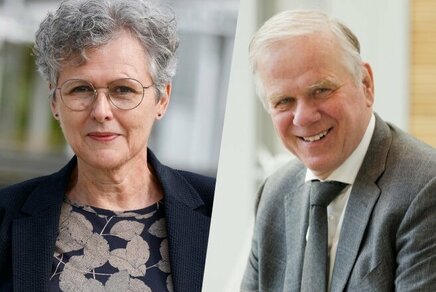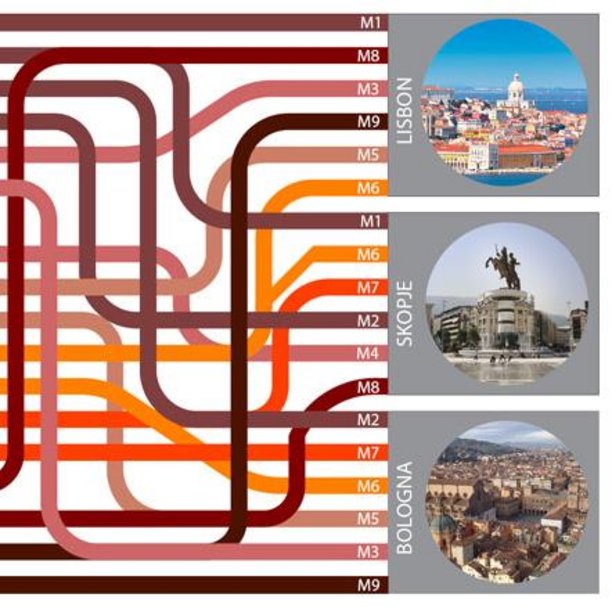New ICT methods and techniques in the context of building sciences and urban sciences.
According to the United Nations, 60% of the world population will live in urban areas in 2030.The main challenges for the built environment are the rapid increase of people living in cities, the depletion of natural resources and climate change. Therefore, smart solutions, based on ICT and data are needed to manage buildings, public spaces and the overall city. Because waste material is not accepted anymore, ICT is needed to trace building components and material over lifetime. Finally, energy consumption by people needs to be controlled, using ICT to influence their behavior. In the ISBE group we make connection between technology, people and built environment where computing science is linked with behavioral science. BIG data from building/city models are combined with data from sensors and questionnaires to draw conclusions on the quality of the built environment. Information systems are developed to enable informed decisions for the engineering and management of the built environment.
Read moreRecent Publications
Our most recent peer reviewed publications
-
Deniz Ikiz Kaya,Gamze Z. Dane,Nadia Pintossi
Subjective Circularity Performance Analysis of Adaptive Heritage Reuse Practices in the Netherlands
Sustainable Cities and Society (2021) -
Gengzhe Wang,Qi Han,Bauke de Vries
The multi-objective spatial optimization of urban land use based on low-carbon city planning
Ecological Indicators (2021) -
Shushan Hu,Jiale Wang,Cathal Hoare,Yehong Li,Pieter Pauwels,James O'Donnell
Building energy performance assessment using linked data and cross-domain semantic reasoning
Automation in Construction (2021) -
Philipp Geyer,Christian Koch,Pieter Pauwels
Fusing data, engineering knowledge and artificial intelligence for the built environment
Advanced Engineering Informatics (2021) -
Deniz Tuzcuoglu,Dujuan Yang,Bauke de Vries,Aslı Sungur,H.A.J.A. Appel-Meulenbroek
The phases of user experience during relocation to a smart office building: A qualitative case study
Journal of Environmental Psychology (2021)
Meet some of our Researchers
Key Publications
Pauwels, P., Zhang, S., & Lee, Y-C. (2017). Semantic web technologies in AEC industry: a literature review. Automation in Construction, 73(C), 145-165. DOI: 10.1016/j.autcon.2016.10.003
Kim, S., Yang, D., Rasouli, S. & Timmermans, H. J. P., 1 Sep 2017, Heterogeneous hazard model of PEV users charging intervals: analysis of four year charging transactions data, In : Transportation Research. Part C: Emerging Technologies. 82, p. 248-260 13 p.
Dane, G., Borgers, A. & Feng, T., 2019, Subjective immediate experiences during large-scale cultural events in cities: a geotagging experiment, In : Sustainability. 11, 5698, 19 p.
Wang, G., Han, Q., & de Vries, B. (2019). Assessment of the relation between land use and carbon emission in Eindhoven, the Netherlands. Journal of Environmental Management, 247, 413-424. DOI: 10.1016/j.jenvman.2019.06.064
Chen, H-C., Han, Q., & de Vries, B. (2020). Urban morphology indicator analyzes for urban energy modeling. Sustainable Cities and Society, 52, [101863]. DOI: 10.1016/j.scs.2019.101863
See all the ISBE publications
Recent Publications
Our most recent peer reviewed publications
-
Pei-Hsuan Lee,Qi Han,Bauke de Vries
A Conceptual Framework for a Sustainable Building Rating System
(2024) -
Pei-Hsuan Lee,Qi Han,Bauke de Vries
A Conceptual Framework for a Sustainable Building Rating System
(2024) -
Qi Han,Pei-Hsuan Lee
Environment Performance Criteria as Means for Green Public Procurement
(2024) -
Ke Yang,Qi Han,Bauke de Vries
Urbanization effects on the food-water-energy nexus within ecosystem services
Ecological Indicators (2024) -
Koen de Vos,Gijs van den Brandt,Jordy Senden,Pieter Pauwels,Rene van de Molengraft,Elena Torta
Generation of skill-specific maps from graph world models for robotic systems
(2024)
News



Presentations from our PhDs
Contact
-
Visiting address
VertigoGroene Loper 6EindhovenNetherlands -
Visiting address
VertigoGroene Loper 6EindhovenNetherlands -
Postal address
Department of the Built EnvironmentP.O. Box 5135600 MB EindhovenNetherlands -
Postal address
Department of the Built EnvironmentP.O. Box 5135600 MB EindhovenNetherlands -
Secretary


